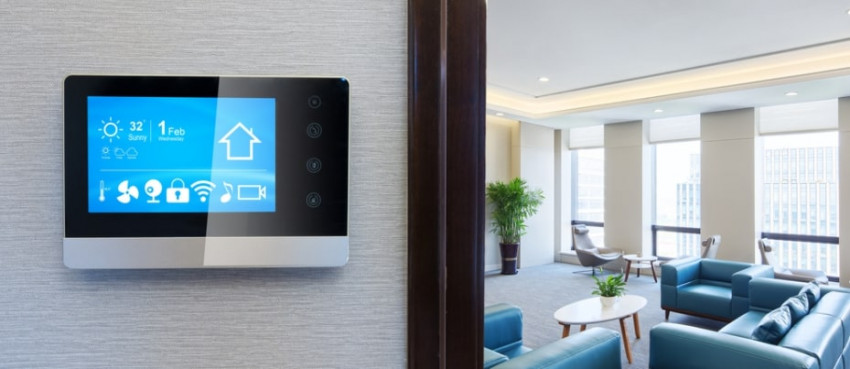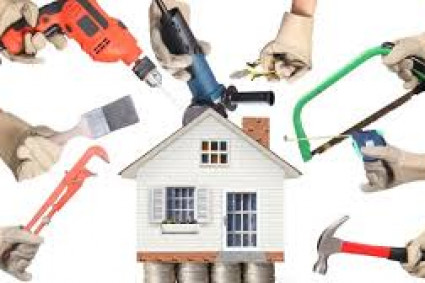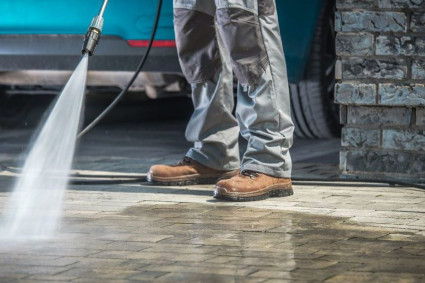
The fundamental need for HVAC systems in buildings is that a well-designed HVAC system maintains the temperature and moisture within a range that is most comfortable for indoor spaces. Apart from this, the system also keeps renewing the air and filters out any pollutants to improve the indoor air quality, which is required especially in spaces with stagnant air and limited air flow.
Usually in many residential and commercial buildings, the optimal operating conditions generally have a broad range of temperature and humidity value that are considered to be acceptable. In such cases, the HVAC systems are used to control the temperature only, while the humidity is controlled indirectly.
However, when it comes to sensitive environments like a healthcare facility, temperature and humidity are monitored and controlled independently. High-performance specialized air filter can also be coupled with the HVAC system to further improve the air quality.
Humidity and How to Control It
Precision in regulating the humidity plays an important role in subtle environments where human life or important systems are at risk. Considering healthcare facilities, the relative humidity typically lies between 40% to 60%.
Let’s take a look at how humidity levels can affect humans and electrical systems –
· The body’s ability to fight off infections and viruses can be reduced as dry air absorbs moisture from the mucous membranes.
· Patients with breathing illness, allergic rhinitis and asthma often experience symptoms in humidity extremes.
· When humidity levels are low, dust tends to turn airborne. This can trigger allergic reactions furthermore for patients with breathing illness.
· Dust mites and molds thrive in high humidity levels.
· Static electricity accumulation is increased in low humidity, and discharges can be detrimental for medical equipment.
Considering the weather conditions, the HVAC systems may be operated in humidification or drying mode for different times of the year. These requirements become more stringent in hospitals, especially in surgery rooms.
Common HVAC Design Recommendations
While designing the HVAC system, it is essential to meet the humidity range and specific temperature. Let’s take a look at some of the highly recommended design solutions for sensitive spaces.
1. Air Humidification
In healthcare facilities, the humidification systems are based on steam. Steam helps in destroying bacteria due to its higher temperature. Thus, when steam is the input for an airstream, humidification and heating can be accomplished simultaneously.
In surgery rooms, steam-based humidification is required by law to ensure that the systems are bacteria free and promotes a better environment for the patient. In some sensitive applications, adiabatic humidification is accepted. It provides more savings as compared to steam systems. However, it is necessary to ensure that it can be legally used.
2. Air Dehumidification
For controlling air humidity, there are two main approaches – cooling and heating coils, and desiccant wheel.
In cooling and heating coils the cooling coil cools the air and dehumidifies it until the desired relative humidity is achieved. This results in overcooling of air, which then flows through the heating coil that raises the temperature of the air to the desired value.
The desiccant wheel captures humidity downstream from the cooling unit and then releases it upstream to be condensed and gathered. This system does not need any heating input, but a preheated coil is added for any additional dehumidification if required.
3. Vapor Diffusion Retarders
Vapor diffusion retarders assist the air dryer and humidification systems by creating a barrier against moisture diffusion through walls or other building envelope elements. They are also called as vapor barriers, and depending on the rated permeance value, they are divided into 3 main categories –
· Class I vapor barriers are rated less than equal to 0.1 perms. Glass, sheet metal and polyethylene are some of the examples.
· Class II vapor barriers are rated above 0.1 perms but less than equal to 10 perms. Plywood and unfaced extruded polystyrene are examples of class II vapor barriers.
· Class III vapor barriers have permeance values of above 10 perms. Gypsum board, cellulose insulation and bricks are some examples.
Controlling Ventilation for Sensitive Environment
For sensitive environments, the air changes per hour (ACH) must be met by the ventilation system for creating the required environment. For instance, in surgery rooms, the American Institute of Architects recommends 15 ACH, from which 20% must be outside air.
For air filters, MERV and HEPA are highly recommended as they provide filtration of very tiny particles that most common air filters don’t. Let’s take a look at these air filters to understand them better.
MERV Rating
Minimum Efficiency Reporting Value (MERV) is a scale that measures the effectiveness of the filters. This rating was developed by ASHRAE in the 80s. The rating scales range from 1 to 16. Higher the rating value, higher is the filter’s ability to capture smaller particles.
· MERV rating 1 to 4: 60% to 80% arrestance for particles larger than 10.0 µm.
· MERV rating 5 to 8: 80% to 95% arrestance for particles between 3.0 µm to 10.0 µm.
· MERV rating 9 to 12: 90% to 98% arrestance for particles between 1.0 µm to 3.0 µm.
· MERV rating 13 to 16: Above 95% arrestance for particles between 0.30 µm to 1.0 µm.
Air filters with MERV rating of 7 and above are recommended for sensitive environments. For some specific applications, two filters are used in tandem, where the MERV rating of second filter is higher than the first filter.
HEPA Standard
High-Efficiency Particulate Arrestance (HEPA) is a filter that removes 99.97% of particles that have a diameter of 0.3 µm. The term HEPA has been adopted to refer to filters with high-efficiency, but only the filter that have arrestance ability as mentioned above can be called as HEPA filters.
HEPA filters are widely used in indoor spaces where presence of bacteria and viruses cannot be tolerated. This makes it ideal for sensitive environments. HEPA filters have high power UV lights that kill the bacteria and viruses after they are captured.
With HEPA filters, higher performance comes with increased pressure drop, which raises energy consumption. It becomes important to select a filter that offers adequate performance. Over specified may result in unnecessary higher energy bills.



